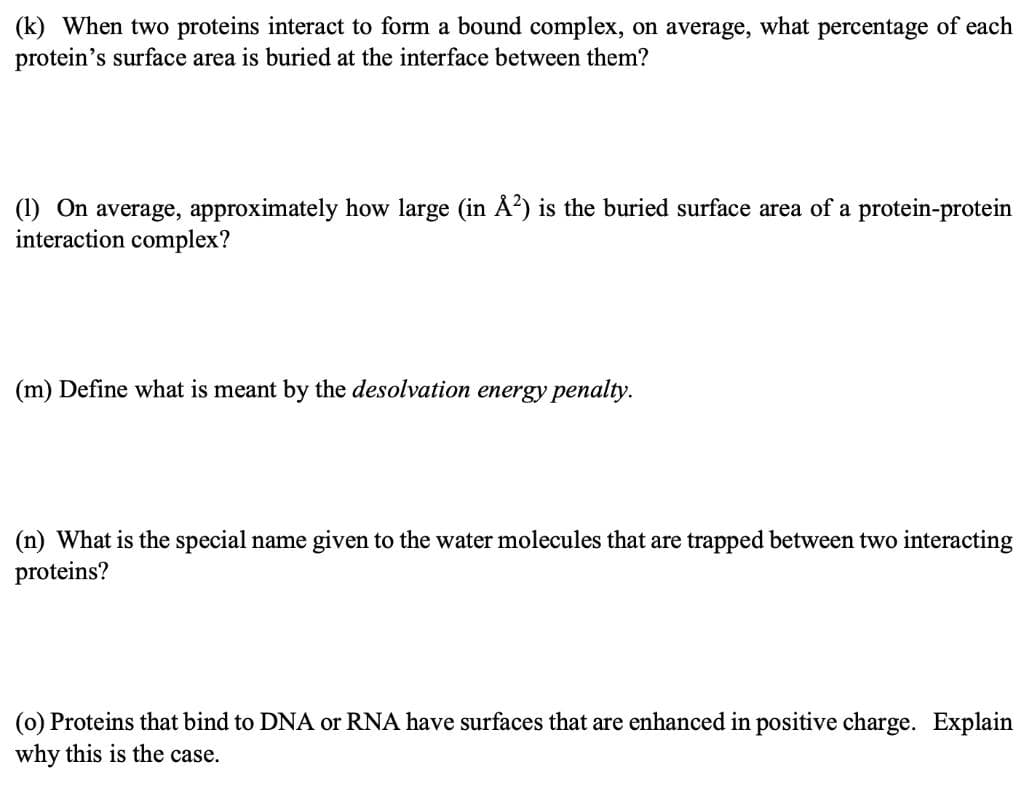(k) When two proteins interact to form a bound complex, on average, what percentage of each protein's surface area is buried at the interface between them? (1) On average, approximately how large (in Å?) is the buried surface area of a protein-protein interaction complex? (m) Define what is meant by the desolvation energy penalty. (n) What is the special name given to the water molecules that are trapped between two interacting proteins? (0) Proteins that bind to DNA or RNA have surfaces that are enhanced in positive charge. Explain why this is the case.
Catalysis and Enzymatic Reactions
Catalysis is the kind of chemical reaction in which the rate (speed) of a reaction is enhanced by the catalyst which is not consumed during the process of reaction and afterward it is removed when the catalyst is not used to make up the impurity in the product. The enzymatic reaction is the reaction that is catalyzed via enzymes.
Lock And Key Model
The lock-and-key model is used to describe the catalytic enzyme activity, based on the interaction between enzyme and substrate. This model considers the lock as an enzyme and the key as a substrate to explain this model. The concept of how a unique distinct key only can have the access to open a particular lock resembles how the specific substrate can only fit into the particular active site of the enzyme. This is significant in understanding the intermolecular interaction between proteins and plays a vital role in drug interaction.
I need help with my

Trending now
This is a popular solution!
Step by step
Solved in 2 steps with 1 images


